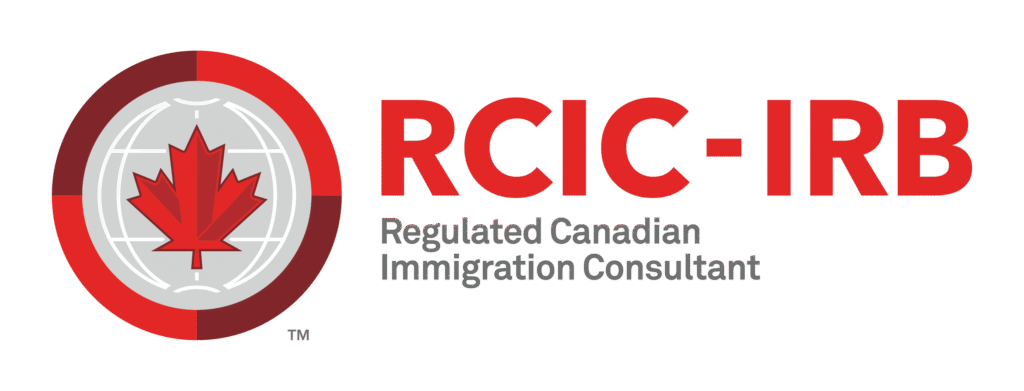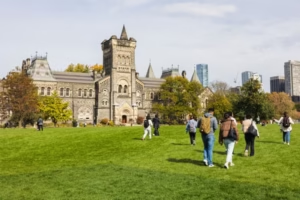Conditions for Studying Abroad in Australia

Australia is one of the best countries to study in, with universities that are on par with those in the UK, the US, and Canada.
Studying abroad in Australia is possible with a student visa at all levels of education. The country’s diverse scholarship offerings, high-quality education, variety of programs, and job opportunities after graduation are key motivators for students choosing to study in Australia.
If you are considering studying in Australia, stay with us. In this article, we will explore the benefits, requirements, levels of study, and everything else you need to know for studying in Australia.
Overview of Studying in Australia
Number of international students (2024): 704,931
Number of Iranian students (2024): 2,814
Number of universities: 42
Tuition fees: Around AUD 20,000 to AUD 50,000 per year (depending on program and level of study)
Availability of scholarships: At all levels
Work opportunities during studies with a student visa: Available
Work opportunities after graduation: Available
Benefits of Studying in Australia for Iranians
Gaining a reputable degree
Access to high-quality educational facilities
Experience of studying in a multicultural country
Exposure to various international cultures
Improvement in language skills while studying
Living and studying in a highly developed, secure country
High chances of finding a job and a clear path to gaining permanent residency
Conditions for Studying in Australia
Let’s review the requirements for each level of study in Australia:
Bachelor’s Degree in Australia
Let’s explore the details and conditions of this level of study:
Duration of Study: 3 to 5 years
Required Language Skills: Minimum IELTS 6.0 or equivalent (varies by program and university)
Age for Admission: Over 18 years old (typically up to 21 or 22 years old)
Acceptable Gap in Education: 1 to 2 years (up to 5 years with relevant work experience)
Work While Studying: 48 hours every 2 weeks
Required Documents: High school diploma equivalent to Year 12 certificate in Australia
Language Proficiency Certificate
Transcripts and academic history
Entrance Exam: Required for some programs such as medicine, dentistry, music, etc.
Top Universities:
University of Melbourne
University of Sydney
University of New South Wales
Monash University
University of Queensland
Popular Programs:
Accounting and Finance
Biomedical Engineering
Business Administration
Civil Engineering
IT
Culinary Arts
Electrical Engineering
Nursing
Psychology
Tuition Fees: Between AUD 20,000 to AUD 45,000 per year
Top Scholarships:
Melbourne International Scholarship
UQ Global Connect Scholarship
Sir John Monash Scholarships for Excellence
Master’s Degree in Australia
Australia offers several types of Master’s programs, including:
Research Master’s Degrees
Coursework Master’s Degrees
Professional Master’s Degrees
Here are the details for this level of study:
Duration of Study: 1 to 2 years
Age for Admission: Up to 34 or 35 years old
Required Language Skills: Minimum IELTS 6.5 or equivalent (varies by program)
Acceptable Gap in Education: 1 to 2 years (up to 5 years with relevant work experience)
Work While Studying: 48 hours every 2 weeks (no limit for professional Master’s degrees)
Required Documents:
Bachelor’s Degree
Language Proficiency Certificate
Transcripts and academic history
Work experience for some programs
Statement of Purpose (SOP)
Letters of Recommendation
Entrance Exam: Required for certain programs such as MBA
Top Universities:
University of Melbourne
Australian National University (ANU)
University of Sydney
UNSW Sydney
University of Queensland (UQ)
Monash University
University of Western Australia (UWA)
University of Adelaide
RMIT University
University of Technology Sydney (UTS)
Popular Programs:
MBA
Architecture
Nursing
Accountancy
Psychology
Tourism
Agricultural Science
Engineering
Tuition Fees: Between AUD 20,000 to AUD 37,000 per year
Top Scholarships:
Australian Government Research and Training Program (AGRTP)
Australia Awards
Destination Australia
John Allwright Fellowship (JAF)
PhD in Australia
A PhD or Doctorate is the highest degree offered in the Australian education system, and most PhD programs are research-based. Students focus on their dissertation.
Here are the details for this level of study:
Duration of Study: 3 to 4 years
Required Language Skills: Minimum IELTS 7.0 or equivalent (varies by program and field)
Age for Admission: Up to 40 or 44 years old
Acceptable Gap in Education: 1 to 2 years (up to 5 years with relevant work experience)
Work While Studying: No limitations
Required Documents:
Bachelor’s and Master’s Degrees
Language Proficiency Certificate
Transcripts and academic history
Strong academic and professional CV
Statement of Purpose (SOP)
Letters of Recommendation (LOR)
Research Proposal
Minimum GPA of 5.5 on a 7.0 scale
Top Universities:
University of Melbourne
Australian National University (ANU)
University of Sydney
University of Queensland (UQ)
Monash University
University of Western Australia (UWA)
UNSW Sydney
Tuition Fees: Between AUD 30,000 to AUD 40,000 per year
Top Scholarships:
Australian Government Research and Training Program (AGRTP)
Australia Awards
Destination Australia
John Allwright Fellowship (JAF)
Studying in Australian Schools
Schools in Australia are categorized as public and private (non-government).
If you are a citizen or permanent resident of Australia or hold a temporary visa, your child can study in Australian schools. Most public schools are free for Australian citizens and permanent residents.
If your child wishes to study in Australia, they will need to apply for a Subclass 500 student visa. This visa allows students to study from Year 1 to Year 12 in Australian schools.
Students under 18 years old must be accompanied by at least one parent or a relative over 21 years old. The accompanying guardian can enter Australia through the Guardian visa.
Here is the breakdown of school levels:
Primary School (Kindergarten/Prep to Year 6 or 7): Ages 4-11, duration about 7 years
Secondary School (Years 7-10): Ages 12-16, duration about 4 years
Senior Secondary School (Years 11-12): Ages 16-18, duration 2 years
Required documents for studying in Australian schools:
Identity documents
Emergency contact information
Passport or birth certificate copy
Visa details
Accommodation and welfare details
Overseas Student Health Cover (OSHC)
English proficiency documents (for secondary school)
Academic transcripts and records
Steps for Studying Abroad in Australia
Studying in Australia has its own processes and steps, including receiving an admission letter from the desired university and applying for a student visa. Below is a general guide to the steps:
1- Improve Language Skills: Since Australia is an English-speaking country, you must have good English skills to study there. The most widely accepted language test in Australia is IELTS, although its equivalents, TOEFL and PTE, are also accepted.
2- Check and Choose the University of Your Choice: Based on your goals and interests, review the study programs of Australian universities (listed in the CRICOS list) and choose your desired university. Each educational institution has its own specific admission requirements. Therefore, carefully review the admission conditions, required documents, scholarship options, housing, and tuition fees on the university’s website. We recommend reading the article on “Student Accommodation in Australia” for information on various student housing options in the country.
3- Apply to the University and Receive an Admission Letter: After reviewing the university’s conditions, submit your application on the university website with all the necessary documents. When the institution accepts your application, pay the initial tuition fee. After making the payment, you will receive a confirmation from the university, which is called a CoE (Confirmation of Enrollment).
4- Apply for a Student Visa: After receiving the university admission and the CoE letter, you can apply for a Subclass 500 student visa. This visa allows you to study in Australia for a maximum of 5 years. You can also bring a family member (spouse or children under 18) with you to Australia. For more information, read the article on “Australian Student Visa.”
5- Arrange Travel and Accommodation: After the immigration office reviews your application, fingerprinting, and issuance of your student visa, you can prepare for your travel to Australia.
Study Costs in Australia
In addition to paying university tuition fees, various other expenses such as tuition costs, educational materials, living expenses, accommodation, visa fees, and others must be considered when evaluating the costs of studying abroad in Australia.
The major study-related costs for studying in Australia are as follows:
Tuition Fees in Australia (Australian Dollars)
Subclass 500 Student Visa Application: $1600
Overseas Student Health Cover (OSHC): Varies based on coverage (starting at $2000 per year for a single individual)
Financial Proof for a Student Visa: $29,710 for a single person
School Tuition Fees: $7800 to $30,000 per year
Undergraduate Tuition Fees: $20,000 to $45,000 per year
Postgraduate Tuition Fees: $20,000 to $37,000 per year
Doctorate Tuition Fees: $30,000 to $40,000 per year
Student Accommodation: $200 to $400 per week
Food and Groceries: $80 to $200 per week
Clothing: $50 to $100 per month
Transportation: $50 to $150 per month
The Australian immigration department has an online tool that helps estimate your living expenses based on your chosen lifestyle.
Top Universities in Australia for Studying
Australia has 43 universities: 40 public universities, 2 international universities, and 1 private university. The Group of Eight (Go8) universities in Australia are among the most prestigious in the country.
Below is a list of the top 10 universities in Australia for 2024, based on Times Higher Education rankings:
| University | City | Global Rank | Rank in Australia |
|---|---|---|---|
| University of Melbourne | Melbourne | 37 | 1 |
| Monash University | Melbourne | 54 | 2 |
| University of Sydney | Sydney | 60 | 3 |
| Australian National University (ANU) | Canberra | 62 | 4 |
| The University of Queensland | Brisbane | 70 | 5 |
| UNSW Sydney | Kensington | 84 | 6 |
| University of Adelaide | Adelaide | 111 | 7 |
| University of Western Australia | Perth | 143 | 8 |
| University of Technology Sydney (UTS) | Sydney | 148 | 9 |
| Macquarie University | Sydney | 180 | 10 |
Best Courses to Study in Australia
Here are some of the most popular courses you can pursue in Australia that offer good career prospects in the country:
Accountancy
Actuarial Science
Architecture
Biomedical Engineering
Psychology
Computer Science and Information Technology
Before deciding on a field of study, research the job market, career potential, and most importantly, your interest in that course. If you would like to learn more about the best courses to study in Australia, check out the article “Best Courses for Studying in Australia.”
Working While Studying in Australia
Students can work while studying to cover living and study costs. The Australian student visa is automatically issued with work rights, although students cannot start working until their study program begins.
Therefore, students with a student visa can work up to 48 hours every two weeks during the term and full-time during holidays.
It is important to note that if you are studying in a research-based master’s or doctoral program, there are no work restrictions.
We recommend reading the article “Student Work in Australia.”
Post-Graduation Work in Australia
International students who graduate from Australian universities can apply for the Temporary Graduate Visa (Subclass 485), which allows graduates to work and live in Australia for 18 months to 3 years, depending on the program.
Eventually, with relevant work experience in Australia, you can apply for permanent residency through work and skills-based visas. To be eligible for an Australian skilled visa, you must be under 45 years of age, and your occupation must be on the country’s skilled occupation list.
We recommend reading the article “Australian Work Visa” to check the requirements for work visas.
Final Thoughts
Studying abroad in Australia is popular due to the use of modern educational facilities, studying at the best universities, and earning internationally recognized degrees. In this article, we reviewed the conditions for studying abroad in Australia at different levels. We also discussed the application process and the costs of studying in the country. If you need advice, you can fill out the consultation form below so that our experts can contact you.
Frequently asked questions
What are the Key Conditions for Studying Abroad in Australia?
Obtaining admission to a recognized institution or university in Australia
Proficiency in English, such as having an IELTS score
Obtaining a Subclass 500 Student Visa
What are the Requirements for the Australian Student Visa (Subclass 500)?
Minimum IELTS score of 6 or equivalent (PTE 50, TOEFL 64)
Proof of financial capability for the first year of study (at least $29,710 for a single person)
Overseas Student Health Cover (OSHC) for the applicant and accompanying family members
Confirmation of Enrollment (CoE) from the chosen university
Genuine Student Statement (GS)
Health assessment and police clearance certificate
How are the University Intakes in Australia?
Australian universities and colleges offer two or three intakes per year. The major intakes are February, July, and November, with February being the main intake, followed by July and then November.
When Does the Academic Year Start in Australia?
The academic year in Australia typically begins in February or early March, marking the end of summer in the country.
The fall semester generally runs until mid-June.
The spring semester lasts from late July to late November, when the summer holidays begin.





